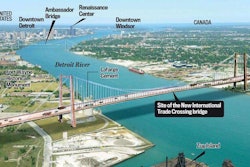Citing a contempt for the national interest on the part of Congress, President Barack Obama vetoed a bill that would have cleared the way for construction of the Keystone XL oil pipeline.
The move comes two weeks after Senate bill S. 1 was passed by the House of Representatives and more than a month after the White House announced it would veto any legislation in support of the pipeline that should cross the President’s desk.
“Through this bill, the United States Congress attempts to circumvent longstanding and proven processes for determining whether or not building and operating a cross-border pipeline serves the national interest,” Obama wrote in his veto message to the Senate.
“The Presidential power to veto legislation is one I take seriously. But I also take seriously my responsibility to the American people. And because this act of Congress conflicts with established executive branch procedures and cuts short thorough consideration of issues that could bear on our national interest — including our security, safety, and environment — it has earned my veto.”
It was Obama’s third use of his veto power, according to a report from the Associated Press.
The bill goes back to Congress and would need a two-thirds majority in both the House and Senate to override the veto.
According to a report from the Washington Post, White House Press Secretary Josh Ernest said the State Department is still reviewing the pipeline to see if it “would serve the national interest.”
“It certainly is possible the president will keep an open mind as the State Department considers the wide range of impacts this pipeline could have on the country, both positive and negative,” Earnest said.
For more than five years, construction of the pipeline has been held up in talks for government approval due to dispute over environmental concerns. The $8 billion pipeline would create a more direct route for oil between Hardisty, Alberta, Canada, and Steele City, Nebraska. From there, oil can travel through the existing Keystone pipeline system all the way to the Gulf Coast.
In his State of the Union address last month, Obama urged Congress to prioritize finding a solution for a long-term highway funding bill rather than focusing its energies on pushing the pipeline through.
“Twenty-first century businesses need 21st century infrastructure—modern ports, and stronger bridges, faster trains and the fastest Internet,” Obama said roughly in the middle of his SOTU address. “Democrats and Republicans used to agree on this. So let’s set our sights higher than a single oil pipeline. Let’s pass a bipartisan infrastructure plan that could create more than 30 times as many jobs per year, and make this country stronger for decades to come.”
Editor’s Note: Senior editor Chris Hill contributed to this report.











